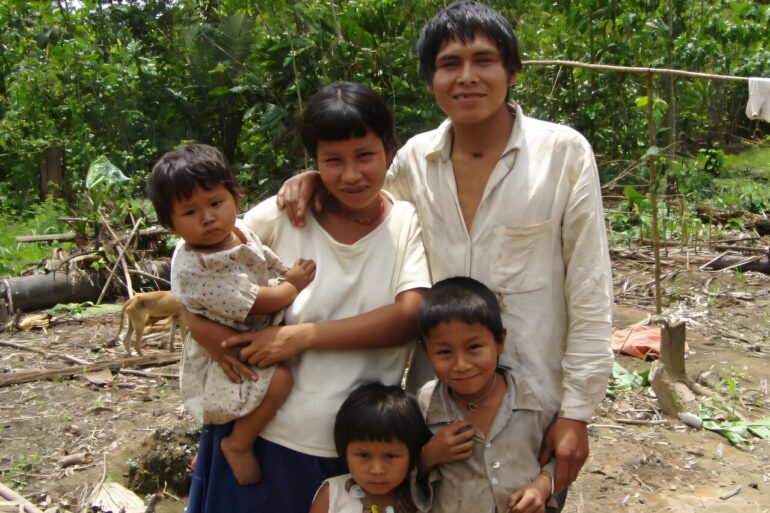A theory that’s been around for more than a decade describes a person’s subjective well-being—”happiness”—as having a U-shape throughout the course of one’s life. If plotted on a graph, the shape would be concave, revealing high happiness levels throughout one’s youth, declining and bottoming out at middle age—the so-called “midlife crisis”—until happiness, somewhat counterintuitively, rises again.
If you live in a rich, industrialized society, this may ring true. By and large, the carefree nature of youth gives way to multiple stressors and pressures as one grows older, followed by what could be a late-life rise in contentment due to a variety of factors: more stability, acceptance and appreciation of one’s place in life, more mature relationships, just to name a few.
However, according to UC Santa Barbara anthropologist Michael Gurven, the U-shape of happiness is not as fundamental to humanity as previously assumed.
In a paper published in the journal Science Advances, Gurven and a team of international collaborators show that in non-industrialized societies, subjective well-being sometimes looks like a U-shape. More often, though, it is more or less flat, or even an inverted U-shape over the course of one’s life―where happiness increases into middle age, and then declines in later life.
Understanding the variability of subjective well-being across humanity is important, Gurven said, especially as the global population ages.
“If you have a preconceived notion that happiness will follow a certain trajectory—that at later ages people are more satisfied with their lives,” he said, “and it turns out to be wrong or even opposite in many places, that has big implications for global health, and taking care of the needs of elders around the world.”
‘Sporadic evidence’
Gurven’s research into subjective well-being started out as a side interest. The main thrust of his work revolves around the lives and health of hunter-gatherer and farming societies, particularly in the Bolivian Amazon—the Tsimane and Moseten—with whom he has worked for decades. But when he learned about the U-shaped happiness curve, it got him thinking.
“That just does not jibe with my impressions from years of working with rural subsistence populations,” he said. “It didn’t sound right and it certainly didn’t sound like a human universal.”
To test their hypothesis that the happiness curve is more variable among rural, subsistence-oriented societies, the researchers turned to age profiles of well-being by combining three studies, making it the largest compilation to date of non-industrialized populations around the world.
The first study covered three Indigenous populations: the Baka (Africa) and Punan (Borneo) hunter-gatherers, as well as Tsimane horticulturalists, to get a sense of how they rate their subjective well-being. The second study took a broader, cross-sectional view, looking at reports of subjective well-being from forest users in 23 low-income countries; these data allowed the researchers to adjust for many variables that might account for the age effects.
The third was a longitudinal study, honing in on depression in the Tsimane population over time, which allowed the researchers to assess whether patterns observed in a cross-section show up when looking at how well-being changes in the same people over time. Two of the studies also included interviewer evaluations, which provides an independent check on the usual self-reports in well-being studies.
Taking the results together, the researchers found “only sporadic evidence for both a midlife slump and a U-shaped relationship between subjective well-being and age,” according to the study. Rather, they found more evidence for a decline in happiness after middle age, due to diminished physical function, compromised health and less involvement in social networks.
“What unites all these different populations is that they’re all rural, and their livelihoods rely more on subsistence than ties to markets or service jobs,” Gurven said.
“They’re using their bodies to generate income, and so a healthy body is needed to make a living.” Their subjective well-being is often tied to being valued by others, he added. How well they can provide food, income and other services for their family, neighbors and communities is vital, so as people in these kinds of societies decline physically, their happiness may decrease.
Contrast that with the industrialized Global North societies that have institutionalized social safety nets such as health insurance, workers’ compensation and formal retirement, or have pursuits and occupations that lean less on physical capacity. These types of accommodations can help people in urban, industrialized societies overcome some of the challenges of physical aging, Gurven said.
“And if you’re in a comfortable position to reflect and harness the wisdom of your years, maybe you’re happy despite declining health and some social losses,” he said. “You appreciate how things are. But in a lot of places, maybe a positive outlook just isn’t enough.”
The disparity between the researchers’ results and the U-shaped happiness curve illustrates a lack of diversity in studies of human populations, Gurven said.
More than a decade ago, the phenomenon of studying human psychology from limited samples was called the WEIRD problem—people from WEIRD, or Western, educated, industrialized, rich democracies, still represent the vast majority of studies in the social sciences.
“The idea of U-shaped happiness came out of studies from urban nations of the Global North,” explained Gurven. “Even though studies of well-being now span over a hundred countries, participants still mostly come from urban areas. Or the participant pools are limited to people with phones or access to the internet.”
Studies like those by Gurven and his colleagues are important not only because they contribute to the broader role of ecology and culture in shaping human psychology; as a practical matter, they also focus attention on unmet health demands in some of the more vulnerable areas of the world.
“With global aging, we’re now seeing more attention on chronic diseases like heart disease and diabetes increasingly affecting older adults in low- and middle-income countries,” he said. “That’s great, but to help ensure equity in healthy aging, we really need to better understand and monitor the overall quality of life of older people everywhere.”
More information:
Michael Gurven et al, Subjective well-being across the life course among non-industrialized populations, Science Advances (2024). DOI: 10.1126/sciadv.ado0952
Provided by
University of California – Santa Barbara
Citation:
Is ‘U-shaped happiness’ universal? Not for rural subsistence populations, say researchers (2024, October 24)



